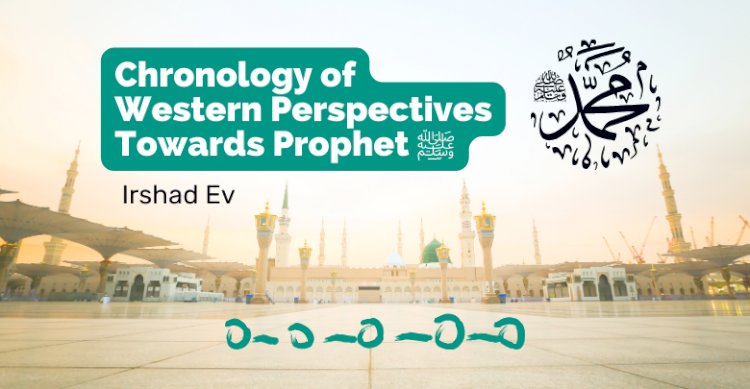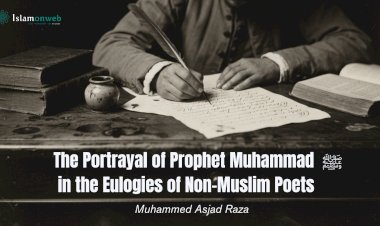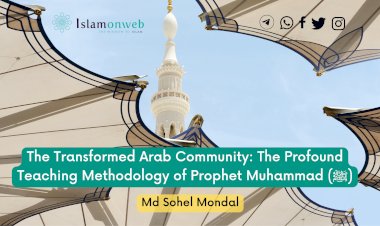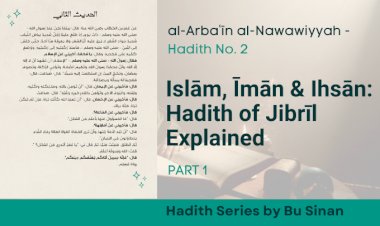Chronology of Western Perspectives Towards Prophet ﷺ - Part Two
Introduction
Western society has a complex history when it comes to its interactions with Islam and its revered Prophet, Muhammad ﷺ. From the early days of Islam to the present century, Western perspectives on the Prophet ﷺ have been diverse and, at times, contentious. This long history of engagement has left an indelible mark on Islamic discourse. Western interactions with Islam, like any cultural exchange, have had their fair share of misunderstandings and disagreements. It is essential to acknowledge the existence of Western propaganda and polemics against Islam and the Prophet Muhammad ﷺ throughout history. These narratives have influenced how some in the West perceive Islam.
Over the centuries, many Western scholars and writers have explored the life and teachings of the Prophet Muhammad ﷺ from various angles. Their depictions and interpretations have varied, reflecting the rich diversity of Western thought and intellectual traditions. To gain a deeper understanding of this crucial topic, it is important to identify common themes in the early polemics against Islam and the evolving approaches in the modern era. By doing so, we can appreciate the nuances and complexities of Western engagement with Islam and its Prophet ﷺ, while respecting the beliefs and values held dear by Muslims. This historical exploration should be approached with sensitivity and an open-minded perspective, recognizing the importance of mutual respect and understanding among different cultures and faiths.[1]
Early Christian Perspective Towards Prophet ﷺ
During the early years of Islam, Christian perceptions towards Prophet Muhammad ﷺ were largely negative. This was because Islam was seen as a rival religion to Christianity and its teachings were perceived as a challenge to Christian doctrine. Islam and Christianity were in fight from the earliest time of its expansion to outside of the Arabian Peninsula. So, they are compelled to study about the Islam and its Prophet ﷺ, at least for the defamation and abuse. Here, the researcher sheds the light on some personalities, who were seriously engaged with the Prophet ﷺ and other Islamic discourses in the early Christian period.
Sebeos
The oldest archive, about the Prophet ﷺ from outside the Islam, is written by Sebeos. He was an Armenian bishop of the House of Bagratuni. He possesses knowledge of the Prophet's ﷺ name, his occupation as a merchant, and the transformative impact of an unforeseen divine revelation on the Prophet Muhammad's ﷺ life.[2] Sebeos is the first non-Muslim author to present a theory for the rise of Islam that pays attention to what the Muslims themselves thought they were doing.[3]
He was a contemporary of Muhammad ﷺ and wrote a history of the world from the creation to his own time. As mentioned above, Sebeos mentions Muhammad ﷺ in several places in his history. He describes the Prophet ﷺ as a merchant who received a revelation from God. He also mentions that Prophet Muhammad ﷺ preached a new religion that rejected polytheism and called for the worship of one God.
John of Damascus
One of the earliest Christian writers to mention Prophet Muhammad ﷺ was John of Damascus, a Syrian monk who lived in the 7th and 8th centuries. In his writings, John of Damascus portrayed Islam as a heretical religion and Prophet Muhammad ﷺ as a false prophet who had deceived his followers with his teachings.
John of Damascus, in his writings, referred to Prophet Muhammad ﷺ as a "false prophet" and raised concerns about what he perceived as untruths and deception. He also suggested that some portions of the Qur'an might have parallels with the Bible, a viewpoint shared by some Christian scholars of the time. Additionally, he criticised certain Islamic practices such as the prohibition of alcohol and the allowance of polygamy.[4] It's worth noting that in the book by American scholar Jonathan A.C. Brown, John of Damascus is recognized as ‘The godfather of Christian polemicist’.[5]
Sophronius of Jerusalem
Other early Christian writers such as Sophronius of Jerusalem and the Byzantine emperor Heraclius also viewed Islam and Prophet Muhammad ﷺ in a negative aspect. They saw Islam as a threat to the Christian world and portrayed Prophet Muhammad ﷺ as a false prophet who had misled his followers. Despite these negative perceptions, there were also some Christian writers who showed a more nuanced understanding of Islam and Prophet Muhammad ﷺ. For example, the Christian monk, Maximus the Confessor, who lived in the 7th century, acknowledged that Islam has a genuine religious message and that Prophet Muhammad ﷺ was a sincere religious leader.[6] It is important to note that Maximus the Confessor was a Christian monk who lived in the 7th century. His views on Islam are shaped by his own religious beliefs, but they are also more nuanced and balanced than the views of many other Christian writers of his time.
An individual from the Byzantine Empire named Nicetas Choniates is known to have initiated a certain genre of writings originating from the Western world. His works were published with the support of Byzantine Emperor Basil I. In these writings, he criticised the Qur'an and the esteemed Prophet Muhammad ﷺ using disparaging language. It was in this historical context that the historian Theophanes introduced the polemical approach of depicting the Holy Prophet (peace be upon him) as a fraudulent figure.[7]
The strongest criticisms against Islam came from Spain. This was a place where Muslims had ruled for a long time, and their presence posed a challenge to the local Catholic beliefs. To slow down the spread of Islam, some people, like the priest Eulogius of Córdoba, wrote harshly about it. Surprisingly, they used less reliable Latin sources even though they could have found more accurate information about Islam. The most important thing here is that all the publishers of such works were pastors or members of the Church, their works and sermons were recorded and passed onto future generations.
This trend gained popularity during the Crusades. A French abbot named Peter the Venerable was the driving force behind it. He translated some Arabic texts including the Qur’an into Latin and wrote a rebuttal to them. Famous Sīra historian Mahir Hamada observes that later polemicists developed following Peter’s footsteps.[8] At this time, many poets like Walter of Sens had already started criticising the Holy Prophet ﷺ overtly and covertly in their poems. In his poem of 1090 lines, Walter describes the history of the Prophet ﷺ with the strangest exaggerations.[9]
In the Middle Ages, Westerners used the terms Saracens and Muhammadan to refer to the Muslims. The term Muslim was not used until the 17th century. When it comes to Islam Some say that they were targeting the image of Muhammad ﷺ. Because of the absence of accurate information, myths and false tales were swiftly circulated. These often included a mix of widely known accounts and fabricated narratives. Regrettably, this led to the creation of a highly unfavourable image of the Holy Prophet ﷺ during that period, due to two major elements:
Socio-political Factors
Ever since Islam began to spread outside the Arabian subcontinent, Muslims have had to contend with the Christian world. The most notable of these is the power struggle that lasted for nine centuries with the Byzantine dynasty. This conflict ended in 1453 when Muḥammad al-Fātiḥ conquered Constantinople. Thus, the Crusade period (1096-1291) also led to many conflicts between the two worlds. In later years, after the collapse of the Ottoman Empire, Muslims felt a sense of grievance due to the blocking of the Islamic Caliphate. Through colonisation, Western powers assumed administrative and ideological control over many Muslim countries, further influencing the course of history in this dynamic interplay.
Amidst the ongoing conflicts between the Muslim and Christian worlds during the Middle Ages, the prominent figure of Islam faced considerable animosity. This tension was such that the name 'Muhammad' was sometimes substituted with the term 'Mahound' (often interpreted as "King of Darkness"), a label that gained popularity among certain groups in the Christian world.[10]
As a result, distorted historical stories about the Holy Prophet ﷺ were spread in the Western world mainly by church leaders. They were unwilling to study the Holy Prophet ﷺ objectively or to refer to such authentic texts. Church men were trying to hide the individual effect of the Holy Prophet ﷺ to the best of their ability. Often, they imposed ideas against the basic tenets of Islam on the Holy Prophet ﷺ. They dismissed Muslims as idol worshipers and Muhammad ﷺ as an idol. Such Western history books show that in the First Crusade in 1099, when the crusaders led by Tancred captured the Aqsa Mosque, there was a silver statue of Muhammad.[11] This story is also narrated in the Song of Roland, which was very popular in Europe at the time. In the song of Roland, it is also described that Muslims worshipped about thirty idols in that period.[12] They did not even add that these arguments are directly opposite to Tawḥīd, which is the foundation of Islamic theology.
Thus, fake stories were also circulated about the revelation of the Prophet ﷺ. For example, this illusion is a hoax perpetrated by the Prophet ﷺ to make his followers believe that he is receiving revelation. The church pastors spread among the devotees that the Prophet ﷺﷺ had trained a pigeon for this purpose, and when it was the time for revelation, he would put corn in his ears so that when the pigeon sat on the Prophet’s ﷺ shoulder and carved them, the followers would believe that it was Gabriel’s disguise.
Source of Writings
During the Middle Ages, Christians in the Western world often encountered information about Islam and the Holy Prophet ﷺ from three primary sources. These sources included Arab-Christian writings, which were sometimes composed in Arabic or Greek, Byzantine works, and Spanish writings. Among these, it was the Spanish writings that presented the most intense and critical approach to Islam and the Holy Prophet ﷺ.
However, the challenge that arose during this period was the variation in these sources and the scarcity of authentic and primary materials. As a result, Western audiences often misinterpreted the character and teachings of the Holy Prophet Muhammad ﷺ, viewing him through negative lenses. The absence of reliable sources and the differing perspectives from these writings contributed to the creation of an unfavourable image during this historical era.
Irshad Ev S/o Ismail Ev is a Postgraduate research scholar at Darul Huda Islamic University specialising in Hadith and Related Sciences. His area of interests includes Western sīra literature with special focus on Modern, Orientalist approaches. He currently works on thesis for partial fulfilment titled”Western works on the prophet Muhammad (ﷺ) from 18th to the present : An analytical study on the evolutions of perspectives”. irshadevkyd@gmail.com
References
[1] Ahmed, A. S. Western representations of Islam: Stereotypes and the media (London: Pluto Press, 1992)
[2] Thomson, R. W. The Armenian History Attributed to Sebeos: An annotated translation (Liverpool: Liverpool University Press, 1999)
[3] R. G. Hoyland, Seeing Islam As Others Saw It: A Survey And Evaluation Of Christian, Jewish And Zoroastrian Writings On Early Islam (n.p, 1997)
[4] John of Damascus. On heresies, Tran. Frederick H. Chase, Jr. (Washington, DC: Catholic University of America Press, 1967)
[5] Brown, J. A. C. Misquoting Muhammad: The challenges and choices of interpreting the Qur’an (London: Oneworld Publications, 2014)
[6] Maximus the Confessor. Maximus the confessor: Selected writings, Tran. George C. Berthold (NJ: Paulist Press, 1996)
[7] Theophanes. Chronographia, Trans. Henry Osborn Dwight (Harvard University Press, 1953)
[8] Hamada, Mahir. The Image of the Prophet Muhammad in Western Literature (Al-Abhath, vol.60, no. 2, 2008)
[9] Houben, Johannes. Walter of Sens’s Anti-Islamic Poem: A Clue to the Beginnings of Polemics Against Islam in the Latin West? (Journal of Medieval History, vol.15, no. 3, 1989)
[10] Holt. The Cambridge history of Islam; The Central Islamic Lands, Seventh to Eleventh Centuries, Ed. Ann K.S. Lambton, and Bernard Lewis (Cambridge University Press, 1977)
[11] Fulcher. Historia Hierosolymitana, Trans. Francis Rita Ryan (University of Tennessee Press, 1969)
[12] Turold. The Song of Roland, Trans. Frank Barron (Oxford University Press, 1967) lines 1010-1015.
Disclaimer
The views expressed in this article are the author’s own and do not necessarily mirror Islamonweb’s editorial stance.
























Leave A Comment